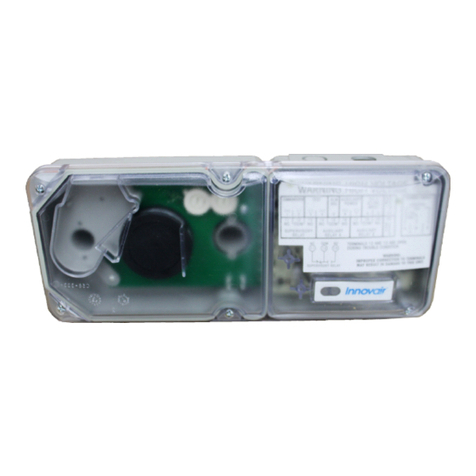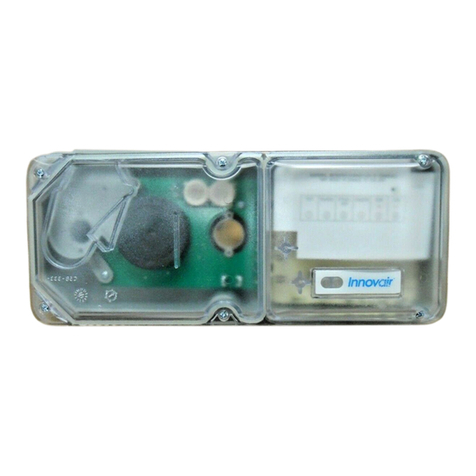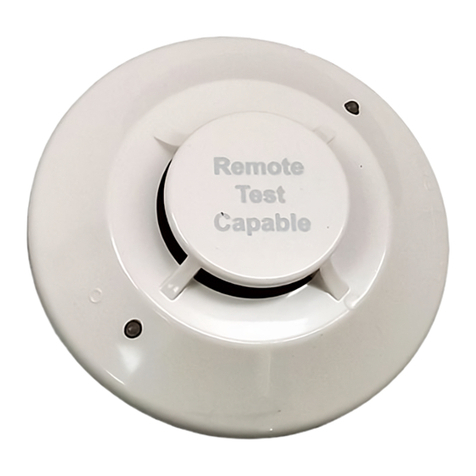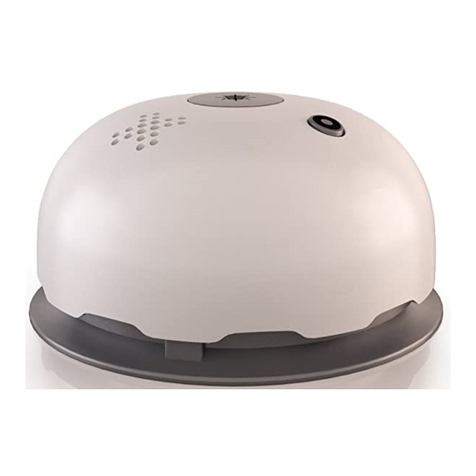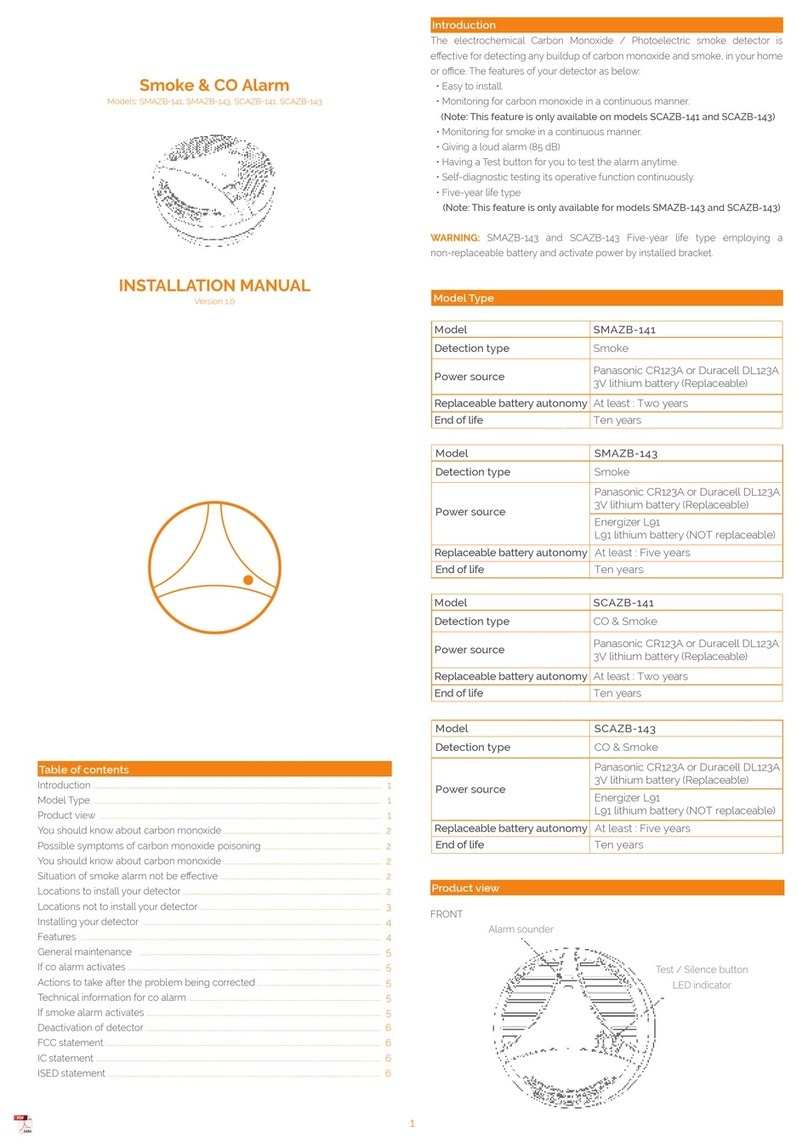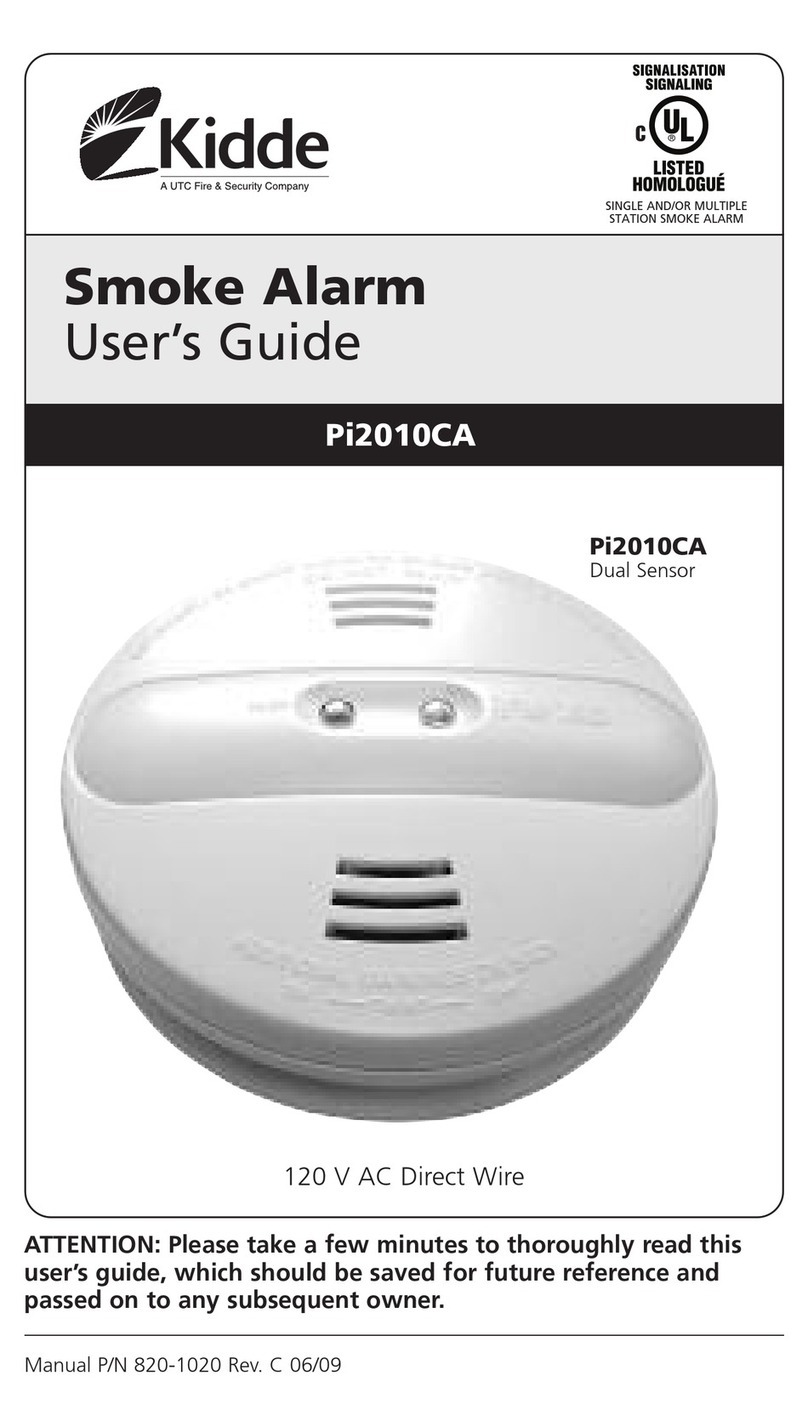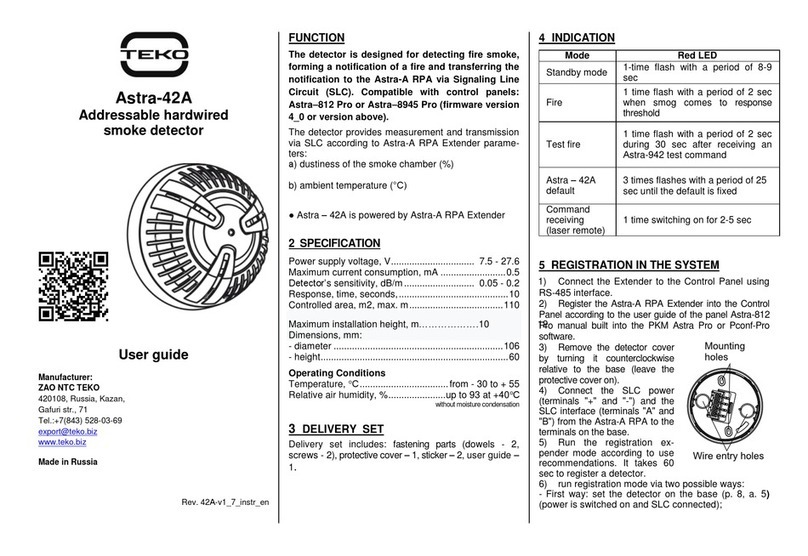
Intelligent Products—DH500 Series Intelligent Air Duct Smoke Detector 3
Introduction
This document contains important information about installing and
operating the Johnson Controls DH500 series intelligent air duct smoke
detector. If you install this detector for someone else to use, you must
leave a copy of this document with the user. The DH500 series duct
detector is listed per UL 268A.
These instructions provide information regarding mounting, wiring,
installation, testing, and maintenance. Follow only those instructions that
apply to the model you are installing.
Before you install any DH500 series intelligent air duct smoke detectors,
read and be familiar with:
●the control panel system installation manual
●the requirements of the authority having jurisdiction
●National Fire Protection Association (NFPA)-72-National Fire
Alarm Code and NFPA-90A, Installation of Air Conditioning and
Ventilation Systems
●System Sensor Guide for Proper Use of System Smoke Detectors
Technical Bulletin in the Fire Initiating Devices and Notification
Appliances Technical Manual (FAN 408), which provides detailed
information on detector spacing, placement, zoning, wiring, and
special applications
●or, for non-United States installations, applicable codes and standards
specific to country and locality of installation
Failure to follow these directions may result in failure of this device to
report an alarm or trouble condition or respond properly to an alarm
condition. Johnson Controls is not responsible for devices that have been
improperly installed, tested, or maintained by others.
As is the case with all installations under NFPA, Underwriters
Laboratories of Canada (ULC), or Canadian Electrical Code classification,
final written approval of permissible operation and configuration rests
with the authority having jurisdiction.

